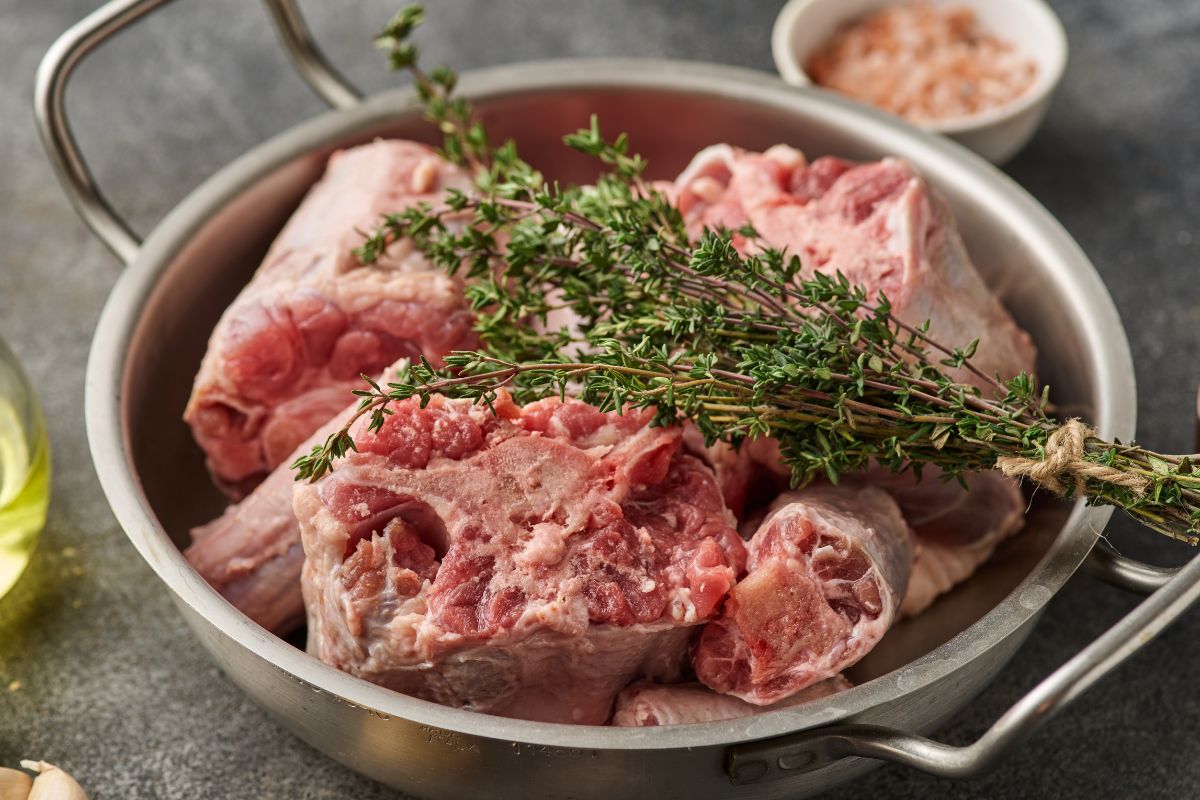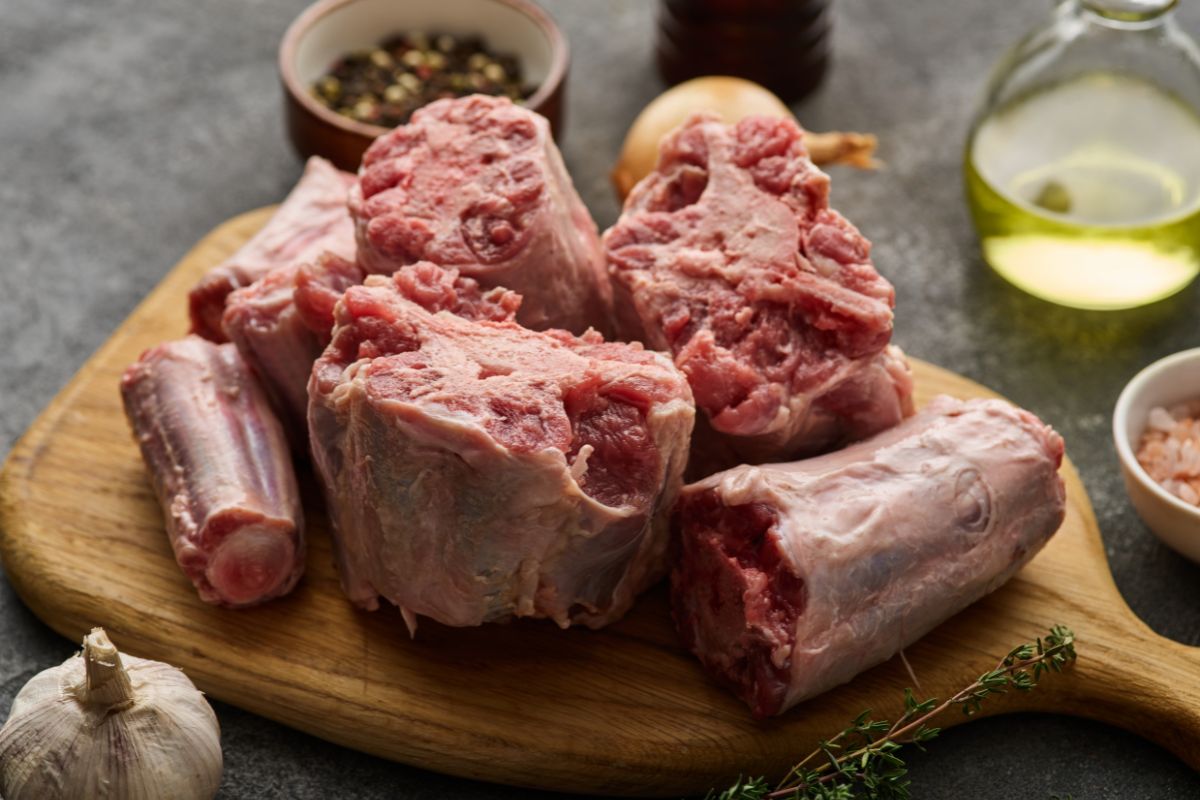Welcome to the fascinating world of oxtail!
Whether you’re a seasoned food enthusiast or simply curious about new culinary experiences, this article will provide you with a mouthwatering glimpse into the realm of this delectable meat cut.

From its origins and unique characteristics to its diverse culinary uses and cooking techniques, we invite you to embark on a flavorful journey to discover the wonders of oxtail.
Get ready to indulge in rich flavors, tender meat, and an unforgettable dining experience.
About Oxtail
Oxtail is a distinctive and flavorful cut of meat that comes from the tail of a cow. Despite its name, it is not exclusive to oxen but can be sourced from various bovine breeds.
This culinary gem is cherished in many cultures and has found its way into a wide range of dishes around the world.
What sets oxtail apart is its gelatinous texture and rich, beefy flavor. The tail contains a generous amount of connective tissue and marrow, which contribute to its unique characteristics.
When cooked slowly and patiently, these collagen-rich components break down, resulting in tender, succulent meat that practically melts in your mouth.
Historically, oxtail was a staple in traditional peasant cooking, as it was an affordable and versatile ingredient.
Over time, it has gained popularity and is now enjoyed in both home kitchens and fine dining establishments.
From hearty stews and soups to braised dishes and even barbecue, oxtail proves to be a versatile cut that can be prepared in numerous ways.
Due to its robust flavor, oxtail pairs well with aromatic herbs, spices, and robust sauces. It infuses its essence into the dish, creating a depth of taste that is simply irresistible.
Whether you prefer classic preparations or innovative culinary creations, oxtail offers endless possibilities for exploration and experimentation in the kitchen.
Culinary Uses
Oxtail’s versatility in the kitchen opens up a world of culinary possibilities. Its rich flavor and tender meat make it an excellent choice for a wide range of dishes.
Here are some popular culinary uses of oxtail:
- Stews and Soups: Oxtail shines in hearty stews and soups, where its collagen breaks down during slow cooking, resulting in a luscious, thickened broth. Oxtail soup, often combined with vegetables and aromatic herbs, is a comforting and flavorsome classic.
- Braised Dishes: Braising is a popular cooking method for oxtail, allowing it to become tender and infused with flavors. Whether braised in wine, beer, or a savory sauce, the result is a succulent and melt-in-your-mouth dish.
- Curries: Oxtail adds depth and richness to curries, creating a satisfying and aromatic meal. The slow simmering process allows the flavors to meld together, resulting in a tantalizing curry with tender meat.
- Barbecue and Grilling: Oxtail can be prepared on the grill or barbecue, resulting in a smoky and charred exterior while retaining its juicy interior. Marinating the oxtail beforehand enhances its flavors, creating a mouthwatering grilled delicacy.
- Tacos and Tostadas: Shredded oxtail meat makes a delightful filling for tacos or tostadas. The tender meat combined with traditional Mexican spices and toppings creates a delicious fusion of flavors.
- Pasta and Risotto: Oxtail can be used to create rich and indulgent pasta sauces or risottos. The meat adds a robust flavor and meaty texture to these dishes, elevating them to new heights.
Cooking Techniques

When it comes to cooking oxtail, certain techniques can help you achieve the best results and unlock its rich flavors. Here are some popular cooking techniques for preparing oxtail:
Braising
Oxtail is well-suited for braising due to its connective tissue and collagen. Begin by searing the oxtail pieces in a hot pan to develop a flavorful crust.
Then transfer them to a pot or Dutch oven and add liquid (such as broth, wine, or a combination) along with aromatics like onions, garlic, and herbs.
Simmer the oxtail slowly over low heat for several hours until it becomes tender and the meat easily falls off the bone.
Slow Cooking
Another excellent method for oxtail is slow cooking. Utilize a slow cooker or a low-temperature oven to cook the oxtail for an extended period.
This technique allows the collagen to break down gradually, resulting in a succulent and tender texture. It’s ideal for creating stews, soups, and other braised dishes.
Pressure Cooking
If you’re looking to reduce cooking time without sacrificing tenderness, a pressure cooker can be a valuable tool.
Seal the oxtail and liquid in the pressure cooker, then cook at high pressure for a shorter period.
This method helps break down the collagen quickly, resulting in tender meat in a fraction of the time.
Marinating
Before cooking, consider marinating the oxtail to enhance its flavor. A marinade can consist of ingredients like soy sauce, Worcestershire sauce, vinegar, herbs, and spices.
Allow the oxtail to marinate in the refrigerator for a few hours or overnight, allowing the flavors to penetrate the meat.
Grilling
While less common, grilling oxtail can provide a unique and delicious outcome.
After marinating, grill the oxtail over medium-high heat, turning it occasionally until it develops a charred exterior.
Then transfer it to indirect heat and continue cooking until the meat is tender and fully cooked.
Remember, regardless of the cooking technique you choose, oxtail generally benefits from slow and gentle cooking to achieve the desired tenderness and release its rich flavors.
Final Thoughts
Oxtail is a culinary treasure that delights food enthusiasts around the world.
Its distinctive flavor, gelatinous texture, and versatility make it a cherished ingredient in various cuisines and cooking traditions.
Whether you’re simmering it slowly in a comforting stew, braising it to perfection, or marinating and grilling it for a unique twist, oxtail offers a wealth of delicious possibilities.
From the traditional oxtail soups and stews to fusion creations and global favorites, the culinary uses and techniques for oxtail are as diverse as they are delightful.
It’s an ingredient that invites culinary exploration, creativity, and the chance to savor the robust flavors and textures it brings to the table.
- How To Reheat A Cheesesteak - November 5, 2023
- What Are Three Must Have Kitchen Knives? - September 22, 2023
- How To Protect Edges Of Pie Crust - June 15, 2023








